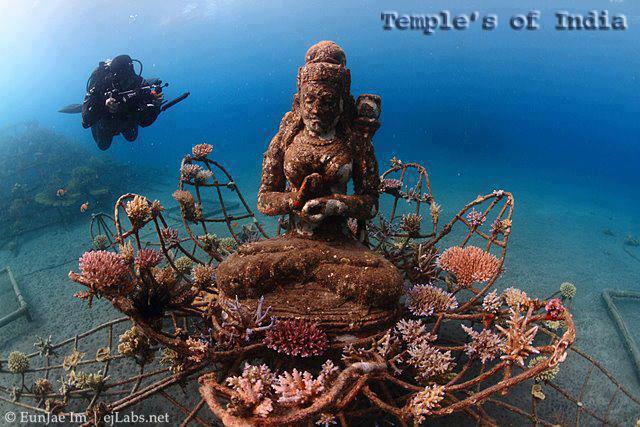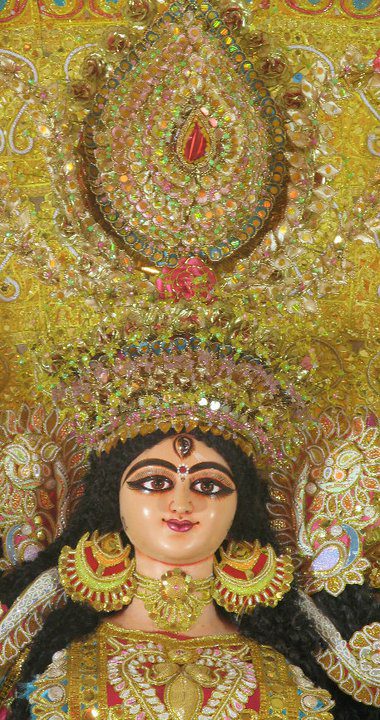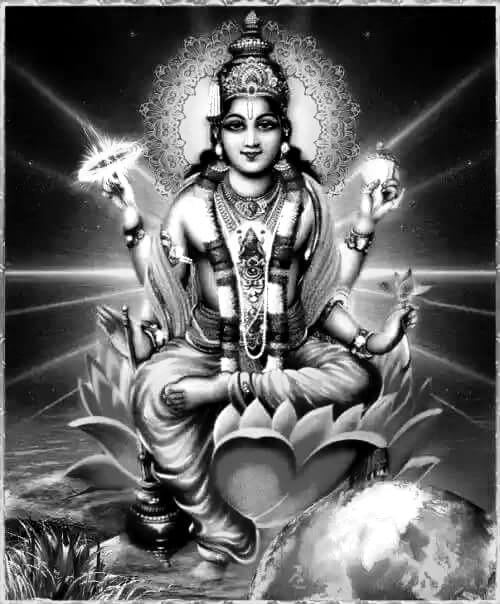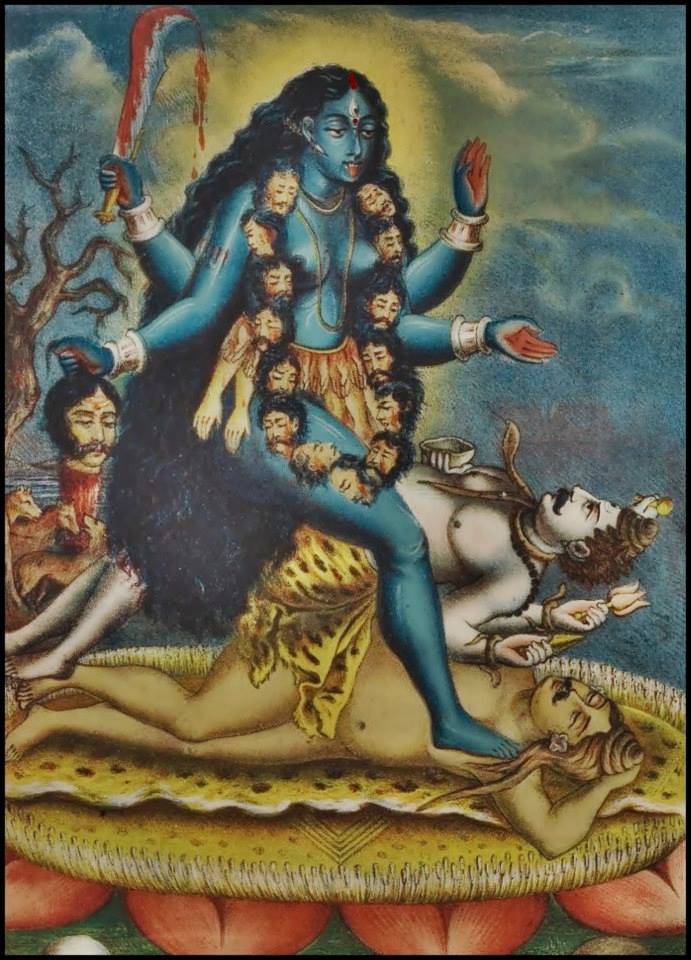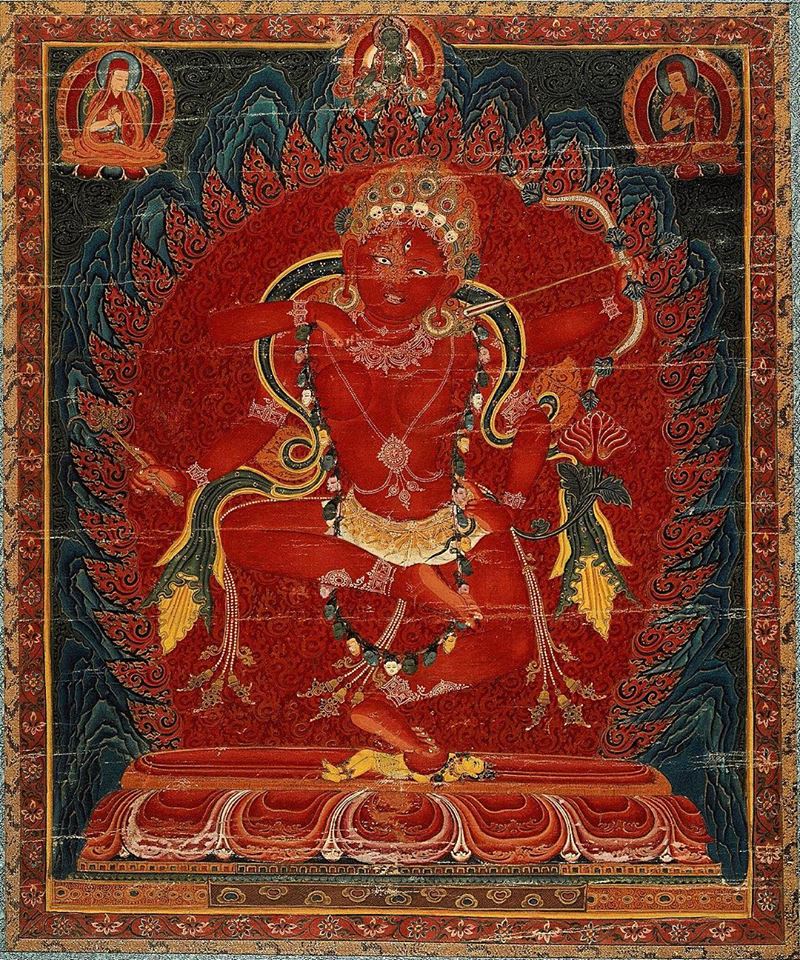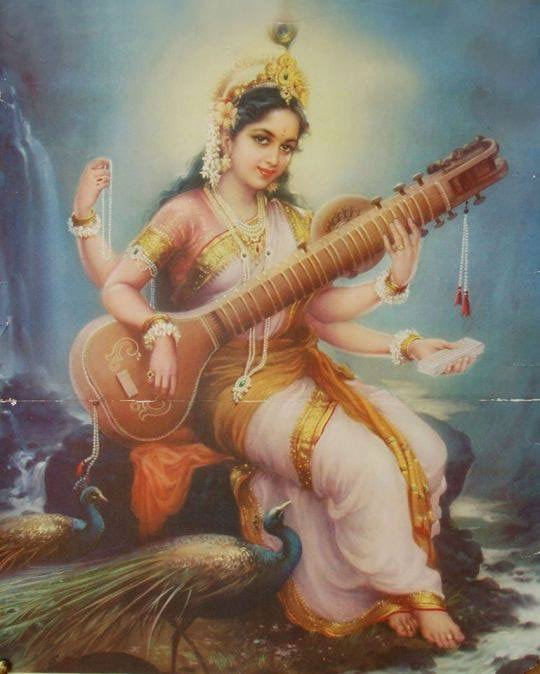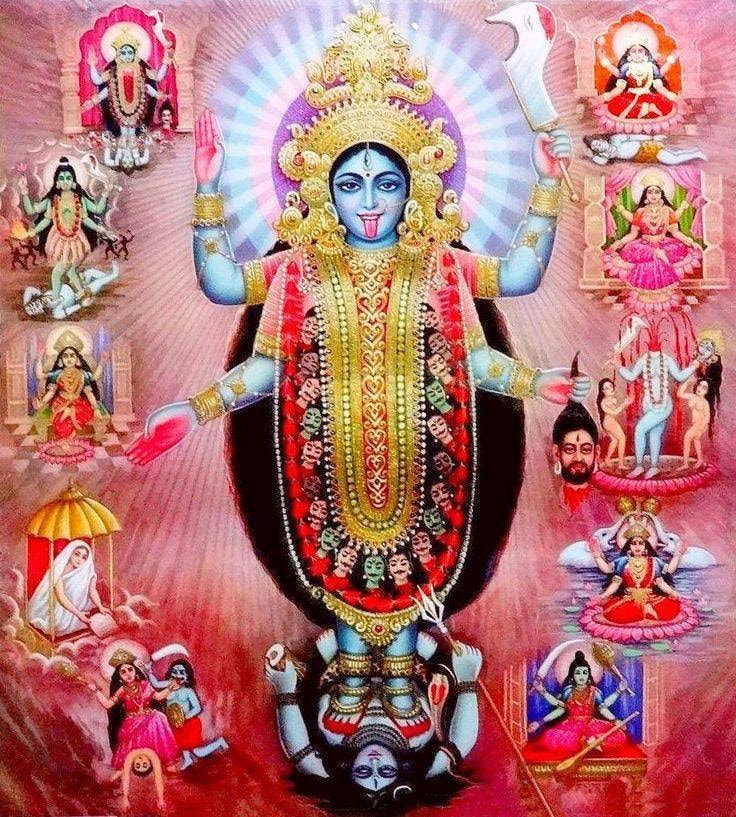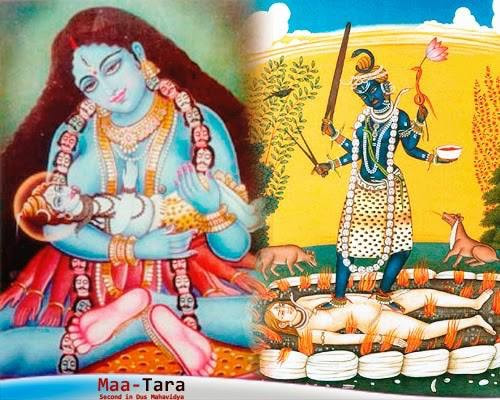
Mother Padmavati is a popular Jain goddess. Among the Yakshis to the 24 Tirthankara, Yakshi Chakreshwari, Kushmandini, Jwalamailini, Ambika and Padmavathi are popular. Of these Goddess Padmavathi happens to be one of the most popular and most worshiped Yakshi in the Jain community. She is also described as Shasan-devi of the 23rd Tirthankara, Lord Parshva.
Humbaj is a hamlet located in Shimoga district in the Indian state of Karnataka. It is also known as known as Humcha or Hamchawadi. It is famous for being home to an ancient temple of Goddess Padmavati, and to the Humbaj Matha meaning seminary or monastery. This is an important institution of the Jain community. Apparently the lake here never dries up and a tree that likewise always remains green. Humca contains one of the most popular Padmavati shrines in the world.
The worship of the Yaksha and Yakshi’s in Jainism varies in different sects and different regions. Yakshi worship predominates the Southern states of India. It is said that the worship of Goddess Padmavathi as yakshi is prominent with the Bispanthy sub sect of Digambars. Digambar means skyclad. Murthipujak sub sect among the Shwetambars also worship Goddess Padmavathi as yakshi.
HUMCHA TEMPLE: Karnataka is rich with ancient temples. Temples with Jain heritage are said to belong to the 5th and 6th century A.D. Jain Goddess in Karnataka is widely worshipped in Karnataka. Mother has a large audience of bhaktas from all sects. Usually, pujas are conducted in Padmavathi temples on Fridays and during festivals. Her birthday in accordance with Mula Nakshatra is followed by grand annadana or food offering. Special puhas are observed during Friday’s of Shravana month.
Deities of Goddess Padmavathi and Lord Parshwanatha glorify the main temple complex at Humcha, Shimoga district, Karnataka, India. The main features are the temple Complex, Jain Mutt, Panchakuta Basadi, Muttina, origin of river Kumudvati and Parshwanatha Idol
DEPICTION: In Jainist religious practice, Tirthankara idols look similar with standard symbolism. One finds snake hoods above the head of Dharanendra Yaksha and Padmavathi Yakshi. This is symbolized with a diamond studded crown. Like wise Lord Parshwanatha is identified with the symbol of a snake and usually we find hoods of snake above the idol.
A snakes hood also covers Mother Padmavati’s head, and she sits on a lotus flower. Often a small image of the Tirthankara is placed in her crown. In addition to this Goddess Padmavathi is said to have four hands. This is called as Chaturbhuje. Her color is golden and her vahana is the snake.
MYTHOLOGY: Jinadatta, the prince of Mathura, fled to south India leaving his home town due to family reasons. Jain monk Muni Siddhantakeerthi advises Jinadatta to carry the idol of Goddess Padmavathi on the horse back and tour the southern parts of India. Reaching Humcha, he took shelter under a Lakki tree. There he is inspired by a dream.
Goddess Padmavathi graces him with thoughts that if she is installed in Humcha, then he may get local support. She too would stay in Humcha. She further instructed him that when iron is touched to the feet of Padmavathi deity, it will be converted into gold. With this wealth, Jinadatta could make Humcha as the capital city.
This prompts Jinadatta to construct a temple dedicated to Goddess Padmavathi and Lord Parshwanatha. His Guru Siddanthakeerthi and his mother settled at Humcha also. Further he married princess Manoradhini of the Kingdom of South Mathura. Humcha is made the capital of his new kingdom.
Everything is moving smoothly but Mother Padvati wanted to test Jinadatta’s devotion. She created two Muttu or pearls at a pond located a few meters away from the temple. Since then this pond is called as Muttina Kere. Kere means tank in Kannada. Of the two pearls one of them was pure and the other was stained a bit. One of persons in the kingdom who found the pearls handed them over to the king.
Now, Jinadatta made two nose rings. The one with pure pearl was given to his wife; Padmavati was given the one with the stained pearl. Later when Jinadatta visited the temple, he was astonished to find the Goddess adorned with pure pearl nose-ring. Padmavati’s divine voice was then heard. The deity was to l loose its divine power of converting the iron into gold. It was to land itself into the well besides the temple.
Jinadatta realized his mistake and pleaded the Goddess for forgiveness. The all-merciful Mother decreed that Jina should install another idol at that place. He was also promised to have her presence felt, Goddess Padmavathi would ensure, the Lakki Tree and the Muttina will never dry; water will be constantly oozing out from the point of origin of Kumudavati River and that when bhaktas are blessed by Goddess Padmavathi, flowers will fall from the right side of the deity..
YAKSHIS: The feminine form of Yaksha is Yakshi. This concept is an ancient Indian Indian tradition referring to a class of natural spirits who are caretakers of the natural treasures hidden in the earth and tree roots. This concept of Yaksha and Yakshi or Yakshini is existent in Hinduism, Buddhism and Jainism.
TIRTHANKARAS: The essential goals to human life in Jainist belief is free oneself from worldly sufferings, inner passions and attain liberation. A Jina, Arihanta or Tirthankara is a liberated soul that is freed of the worldly sufferings and inner passions. He or she resides in Siddhaloka or the top of the world. Tirthankaras are worshiped in Jainism as they have liberated themselves by conquering their inner passions and attained moksha. They have expounded the path of liberation and to get an inspiration to attain their state.
Yakshas and Yakshis are referred to as the Shasanadevatas and Shasanadevis. There is a general belief that Yaksha and Yakshi’s were entrusted by Lord Indra to provide protection to the Tirthankaras.
Yaksha and Yakshis are found in pairs flanking the Tirthankara idol with the Yaksha on the right and Yakshi on the left as guardian deities. They are regarded as the devotees of the Jinas with supernatural powers. Just like humans they too go through the cycles of birth and deaths but have supernatural powers. As they have renounced the world, they cannot reward devotees. But since they do have supernatural powers, Jains give them a place in the temple as some Yakshis were known for bestowing worldly desires. Progressively, the concept of Yaksha and Yakshi’s became very popular in Jainism.
Hara Hara Mahadeva. By Yogi Ananda Saraswathi
--------------------------------------------------------------------------------------------------------------------------
MOTHER PADMAVATI LEAVES VAIKUNTHA: In Tamil, Vaikuntha is described as Divvya lokham, the Divine Land of Bliss. It is said to be even beyond Brahma’s comprehension and the devas as it cannot be described adequately. Vaikuntha is also known as Parama Vyoma, Paramapada and Paramakasa. It contains the fourteen lokhas divided into two andas of seven above and seven below the earth. We will deliberate the greatness of Vaikuntha in another a lot. Once, Mother Padmavati left Vaikunta. Maharishi Bhrigu is said to be the cause of this move.
TIRUMALA STHALA PURANA: Once a grand yagna was planned by Devas and the Gods for Vishwa Shanti. Vishwa Shanti means world peace. So it was to be decided Who among the Trinity was supreme to be considered the considered the best and made the Chief of the Yagna. This was assigned to Bhrigu. He first travels to Brahma’s abode, Satya Lokha.
Creation left Brahma preoccupied with his own self-importance, so Bhrigu was not received according to protocol. But it would have been incumbent for Bhrigu to greet or pay respects to the Creator Lord. You see, the apple does not fall far from the tree. Bhrigu shared his father’s (Brahma) rajo guna. It did not take long before sage Bhrigu cursed his father.
Thereafter, he went to Kailasa. Bhrigu was not welcomed by Shiva as He was engaged in divine yoga with Parvathi. We can call this the cosmic dance to imply Siva’s sexual engagement with Parvathi. Kindly see these physical engagements in a spiritual context vis-à-vis rising of the Kundalini. For instance, when the Puranas mention that when Vishnu was massaging Bhrigu’s feet, he squashed the extra eye that was present in the sole of sage Bhrigu’s foot. This is symbolic of Bhrigu’s false egotism and not Vishnu’s unkindness.
Lord Siva also ignored Bhrigu as the divine couple’s cosmic dance and ultimate yoga is not to be interrupted. Thereafter there are differing versions. One states that instead of according Bhrigu some respect, Siva was given to phallus pleasure and continued his thunderous cosmic dance. So Siva’s was cursed. ‘Since your phallus is enjoying more attention than me, a Maharishi, henceforth you shall be worshiped as a Lingam.’
This is the usual story highlighted by those not given to Shiva worship. Nowadays one has commercial tantra capitalizing on this aspect of the Lingam and Yoni. In a way, not seeing the wisdom behind Maharishi Bhrigu and Lord Shiva is sheer ignorance. You, one has to go beyond pictures, images and Purana story lines. The Maharishi took this opportunity to give all lokhas of the very essence of the Unmanifest via Linga worship. It is not that Lord Siva needs a Linga for worship. All that has happened is the symbolic manifestation of the manifest progressing into the unmanifest, the understanding comprehended as saguna Lingam.
Another version states that Bhrigu interrupted Siva’s sexual dalliance due to his rajo-guna. Siva halted the dalliance and got Parvathi irritated Bhirgu’s interference of her golden moments. Apparently, Shiva came to greet and embrace Bhrigu. But the sage did not reciprocate due to Siva’s non-Vedic Vamachara leftist conduct. There were earlier posts on how Brahma’s lustful fifth head got severed and finally got stuck to Siva’s hands. This later gave us the Kapalikas, skull bearers. Now, seeing the cold-treatment, an enraged Siva ran after Bhrigu with His Trishula to finish him off. But he was pacified by Mother Parvathi.
Now Bhrigu reached Vaikuntha. Vishnu had known the happenings in Satya lokha and Kailasa. After-all this is supremacy contest to decide who would preside the yagna. The ensuing story is told in the Sri Venkateshwara Mahatmyam.
SRI VENKATESWARA MAHATMYAM. Vishnu’s lilas are exposed in this Mahatmyam. Sri Vishnu was in relaxed mode with Mother Lakshmi. His eyes were closed and to get Vishnu’s attention, Bhrigu kicked him in the ribs. Now, the greatest lila of all times, Vishnu does not get angry. He immediately gets up to seat the Maharishi on a throne and messaged his foot on the basis that it could have been hurt while kicking him! It is said that Vishnu’s chest was hard like diamond or he was diamond studded ornamentally so there was a chance of the impacting kick bringing injury, you see.
Apology was tendered formally for his not noticing the arrival of a maharishi. Indeed, the rajo-guna of Bhrigu was pleased with the satvik nature of Vishnu. As penalty, Lord Vishnu removed Bhrigu’s extra eye in one of his soles. Bhrigu was proud of this eye but when it was removed, as this Mahatmyam claims, the spiritual eye of Bhrigu opened. It was then Bhrigu realized the satvic Vishnu and declared to the assembly of devas and Gods of Vishnu’s supremacy. It is left to the individual to accept or reject the spiritual eye story, for Maharishis imply extreme jnana with or without eyes, spiritual or otherwise.
TRIPATI TEMPLE: This is not the end of the Bhrigu visit. Mother Lakshmi was annoyed that Vishnu brought himself to ground level to seek the yagna chiefdom chair. And for Vishnu to massage Bhrigu’s foot was demeaning in Her eyes. So, Lakshmi left Vaikuntha on the basis that Her residence was defiled by Vishnu’s conduct and she could not stay there anymore. She comes down to earth to take residence in Kolhapur. Vaikunta had lost its sheen and glory. Now, there was a long absence and Vishnu does not seem to give company down here on earth. So Lakshmi invokes Lord Shiva and does severe penance for His aid and contribution to be relieved of the pangs of separation. At the instance of Lord Shiva, Lord Vishnu came down to Tirupathi in the Trimala area. The Sri Venkateswara Temple owes its origin to this event.
Hara Hara Mahadeva by Yogi Ananda Saraswathi
-------------------------------------------------------------------------------------------
MOTHER PADMAVATI IN SKANDA PURANA: This is considered the largest of the Mahapuranas. It contains eighty eight thousand and one hundred Shlokas and seven parts as Maheshwar, Vaishnava, Brahma, Kashi, Avanti, Nagar and Prabhasa. Skanda Purana derives its name from Skanda or Kartikeya, the son of Lord Shiva. The Purana holds commentaries on Lord Shiva, Vishnu in a geographical succession. The story of Samudra-manthan is also contained in Skanda Purana.
Circumstances of Skanda’s birth his lilas are the main themes. The demon Tarakasura creates havoc in all three lokhas. The Gods ask of Siva for a warrior God son. Kartikeya becomes the Commander of the gods’ army and slays Tarkasura. Maharishi Veda Viayasa is considered to be the author of all the Puranas. It was recited by Lomaharshana in the Maimisharanga forests.
PADMAVATI: Lord Varaha narrated the tale of Padmavati’s manifestation to Prithvi. He also revealed to her that Padmavati was the reincarnation of Vedavati and had manifested so that she could become his (Vishnu) consort. Lord Varaha said—Once upon a time there lived an emperor named Akash. One day he ordered his men to get the land situated at the bank of Arani ploughed so that a grand yagya could be organized there. As the land was being cultivated, the plough suddenly struck against something.
People ploughing the field dug up that place and were surprised to find an infant girl, crying loudly. The news of girls’ manifestation spread like a wild fire. The emperor became extremely happy since he had no progeny. He brought up that child as his own daughter. This way the baby girl was brought up like a princess. She was named Padmavati. Padmavati proved very lucky for the emperor, as the emperor, who was still sonless till then was blessed with a son. This male child was named Vasudan.
One day, Narada visited the palace and met both the children. He was impressed by Vasudan’s intelligence but Padmavati appeared to be shy and absorbed in her own thoughts. Narada lovingly called her and instructed her to spread her left palm. Narada was amazed to find signs, which predicted Padmavati’s marriage to Lord Vishnu. Everybody living in the palace became happy after getting this news. Narada then went away.
PADMAVATI BECOMES LORD HARI’S CONSORT: Continuing with the tale, Lord Varaha said– One day, while Padmavati and her companions were playing in the garden, they saw an equestrian approaching them. He held a bow and arrows in both his hands. The stranger asked all the girls whether they had seen a wolf. Apparently the stranger was on his hunting spree. Padmavati angrily reminded the stranger that hunting was strictly prohibited in that area and hence he should go back home. The stranger was stunned by Padmavati’s beauty and said ‘I am Ananta from Venketachal mountain. People also call me Veerpati. Can I have this beautiful lady as my wife.’
Padmavati’s companions angrily rebuffed Ananta who then galloped back on his horse. These unfortunate girls were unable to recognize Lord Vishnu who had come disguised as Ananta. After reaching his palace, Ananta found it very difficult to concentrate on his work. His mind was occupied by the thoughts of Padmavati. One day, while he was sitting in a thoughtful mood, Vakulmalika, a maid servant arrived there and requested him to come down for lunch. But, Sri Hari was lost in the thoughts of Padmavati. On being asked by Vakulmalika, Sri Hari narrated the following tale to her:
In Treta Yuga, when I had incarnated as Ram, Ravan had deceit- fully abducted my consort–Sita. But fortunately she was not Sita but Agni’s consort Swaha. Before this incident could occur,Agni had already taken Sita to Patalloka and kept his own wife ‘Swaha’ in her place. Indra’s act had special purpose behind it–to avenge Swaha’s death, who was Vedavati in her previous birth and who had committed suicide after being touched by the same demon.Actually, Agni’s consort ‘Swaha’ was ‘Vedavati’ in her previous birth.
So, in reality Ravana had abducted Vedavati instead of Sita. Later on, I thanked Agni and promised him that I would make Vedavati my consort in Kaliyuga. The same vedavati has taken birth as Padmavati. You must go and convince Padmavati to become my consort. Vakulmalika went to Narayanpur and informed the king about Sri Hari’s desire. Emperor Akash was extremely delighted at the prospect of having Sri Hari as his son-in-law. An auspicious day was chosen for the marriage and thus, Lord Sri Hari got Padmavati as his consort.
Hara Hara Mahadeva. by Yogi Ananda Saraswathi
--------------------------------------------------------------------------------------------------------------------------------
GODDESS PADMAVATI. Alemelu, Alemelmangai, Alarmelmagnai, and Padmavathi are manifestations of Goddess Lakshmi. Padmavati means ‘Lady seated on a lotus. Padmavati is the consort of Lord Venkateswara. It is believed that the goddess Padmavati, an avatara of Lakshmi, was born the daughter of Akasha Raja, the ruler of this region, and wed Venkateshwara of Tirupati. It is to be noted that Padmavathi is also another name for Goddess Manasa.
CONSORTS: Lord Vishnu temples are deemed incomplete unless it also contains a shrine to His Consort Lakshmi. She plays a secondary role as consort and wife. Traditionally the deity is smaller than those of the Lord but her presence is considered mandatory, for without Her, the presiding deity of the temple would lack divine splendour. Often She manifests in the human form. By marrying her, the male god gets the right to be in that area. Good examples are Vishnu marrying Padmavathi in Tiruchanur, Indradevi in Koiladi, Vanjualvalli at Nachiar Koil, Cenkamalavalli at Tereluntur etc.
There would be rich folklore behind the circumstances leading to the marriage. In some temples, Lakshmi stands separate from the temple of the Lord as in Pandharpur, Maharashtra and Dwarka, Gujarat where Rukumani’s shrine stands at a distance from Panduranga. Padmavathi stands separate due to a misunderstanding. The separation yet close relationship between the two shrines is a sign of interdependence yet independence of the God and Goddess.
TEMPLE: Goddess Sri Padmavati main abode is Thiruchanoor which place is also known as Alemelu Mangapuran. This is a suburb of Tirupati City. It is a tradition that pilgrims venerating Lord Venkateshwara at Turupati-Tirumala Balaji, should also offer obeisance to Goddess Padmavati at Thiruchanoor. In Tiruchanoor, Goddess Padmavati manifests as Goddess Sri Padmavathi Devi. Her temple is one of the highly venerated places in the South. It attracts thousands of devout pilgrims daily.
Tiruchanoor occupies a very important place in the ancient scripts. This was a part of Tiruvengadakootam under the Pallavas. Later under the Cholas it became a part of Rajendra Chola Mandalam. In the eighth century, the village was totally a Sri Vaishnava settlement. As the temple of Lord Venkateshwara at Tirumala was not of easy access, a new temple called Tiruvalankoil was constructed at Tiruchanoor to have a representative idol of Lord Srinivasa. Later over a period of time Shaivism, followers of Lord Shiva gained support and importance. Thus a temple of Lord Shiva was erected at Jogimalleswaram. Again following the decline of the Chola’s and the rise of Yadava Rayas, Sri Vaishnavism regained support and a temple was constructed for Goddess Padmavathi.
VENKATACHALA MAHATYAM: Legends have it that Goddess Padmavati is the inexhaustible source of compassion and love. Mother Goddess manifested in the Pushkarini called Padmasarovaram in a golden lotus. That had not blossomed. The Mahatyam states that Lord Suryanarayana was instrumental in blossoming the lotus in full splendour. Thus a temple dedicated to Lord Suryanarayana is found on the eatern side of Pushkarini.
PADMA PURANA: The Padma Purana gives a vivid description of the advent of the Goddess and subsequent wedding with Lord Srinivasa.The manifestation of Sri Padmavathi Devi occurred in the month of Karthika on Sukla Paksha Panchami when the star Uttarashada in the ascendent. The Brahmotsavam of the Goddess is celebrated with all pomp and glory to commemorate the auspicious occasion of Her avatara. This resplendent festival celebrated for ten days attracts devout pilgrims from far and wide.
The Panchami Tirtham marks the highlight of Tiruchanoor Brahmotsavam. Turmeric, Tulasi, Silk Saree and other sacred presents are brought from Tirumala Temple in an impressive procession on this occasion and offered to the Goddess. In an exquisitely decorated mandapam built on the banks of Padma Sarovaram, Sacred bath is offered to Goddess Padmavathi Devi and Sri Sudarsana Chakra amidst vedic chants. The ten-day Brahmotsavam at Tiruchanoor is a spectacular event witnessed by her myriads of devotees. It is also an occasion for all devotees to receive Her benign grace in divine abundance.
MYTHOLOGY: Lord Venkateshwara is in deep penance at Padma Sarovar for twelve years. It is said that Goddess Padmavati appeared on a red lotus flower to give the Lord darshan. The Goddess’s temple origins are narrated in the in Padma Purana. In the supremacy of the Trinity ‘competition’ Bhrigu insults Mahavishnu by kicking him. Padmavati was not pleased at all with Vishnu’s subservient behaviour of forgiving Bhrigu. So she left Vaikuntha and goes to Patala Loka. Unable to bear the separation, Lord Vishnu came down to earth and wandered for days and months. During this wandering he reached Kolhapur, where he worshiped Lakshmi’s image in the temple, set up by sage Agasthya.
One day the aakasa vani, the divine voice told him to do penance for Goddess Maha Lakshmi at the bank of river Swarnamukhi for twelve years. She also directed him to offer lotus flowers for Goddess Maha Lakshmi so that she would grace him with her darshan and accept reunion. On hearing this Lord Vishnu reached Tiruchanoor and dug a tank, which is now called as Padma sarovar.
Lord Vishnu prayed Lord Satyanarayana and asked him to see that the lotus flowers don’t wither. Goddess Mahalakshmi appeared before Lord Vishnu on Karthika Sukla Panchami standing on a red lotus flower with lotus in two hands and offered her hand as a gesture to reunite with the Lord. This form of Goddess Mahalakshmi is still offered prayers as she gave darshan to Lord Vishnu in Padma or Lotus form. This is the tank which is dug by Lord Vishnu for his penance and where Lord Satyanarayana helped Lord Vishnu as Lord Balaji on Tirumala.
BRAHMOTSAVAM: The Brahmotsavam of the Goddess is celebrated with all pomp and glory to commemorate the auspicious occasion of Her avatara. This resplendent festival celebrated for ten days attracts devout pilgrims from far and wide. The Panchami Tirtham marks the highlight of Tiruchanoor Brahmotsavam. Turmeric, Tulasi, Silk Saree and other sacred presents are brought from Tirumala Temple in an impressive procession on this occasion and offered to the Goddess.
In an exquisitely decorated mandapam built on the banks of Padma Sarovaram, Sacred bath is offered to Goddess Padmavathi Devi and Sri Sudarsana Chakra amidst vedic chants. The ten-day Brahmotsavam at Tiruchanoor is a spectacular event witnessed by her myriads of devotees. It is also an occasion for all devotees to receive Her benign grace in abundance.
Hara Hara Mahadeva
By Yogi Ananda Saraswathi.. copyrighted material



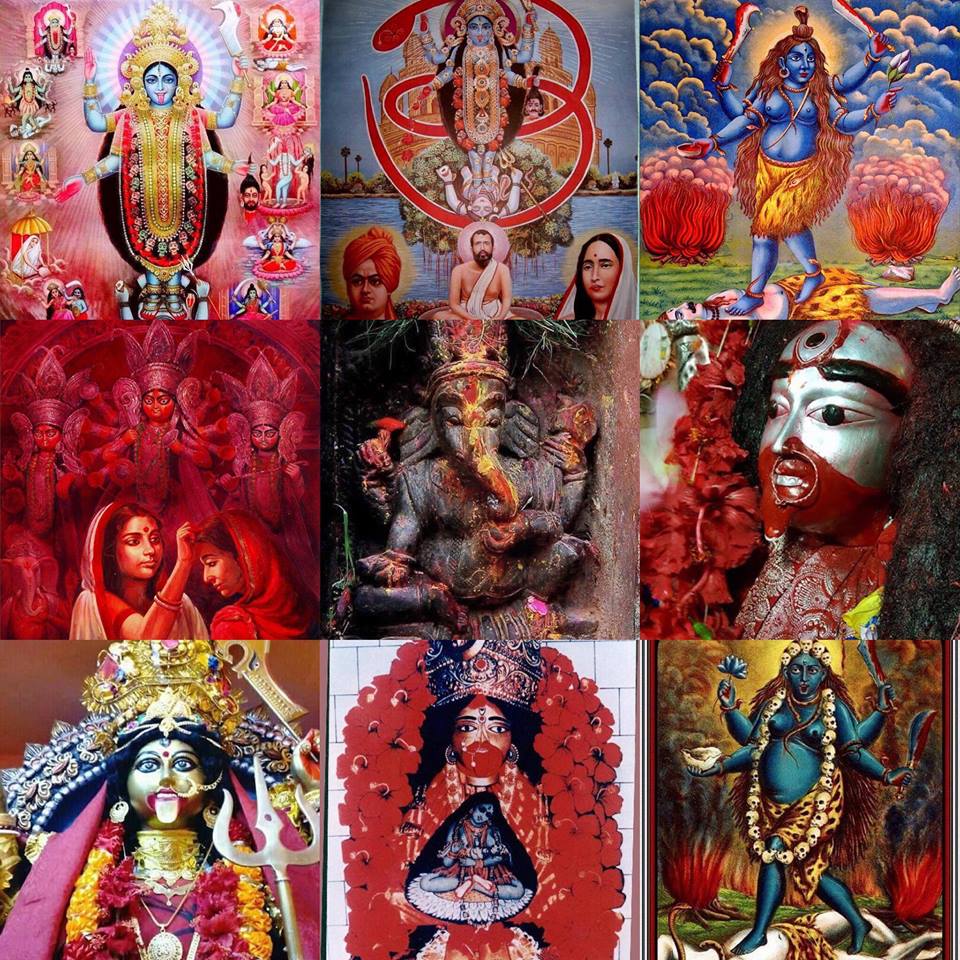
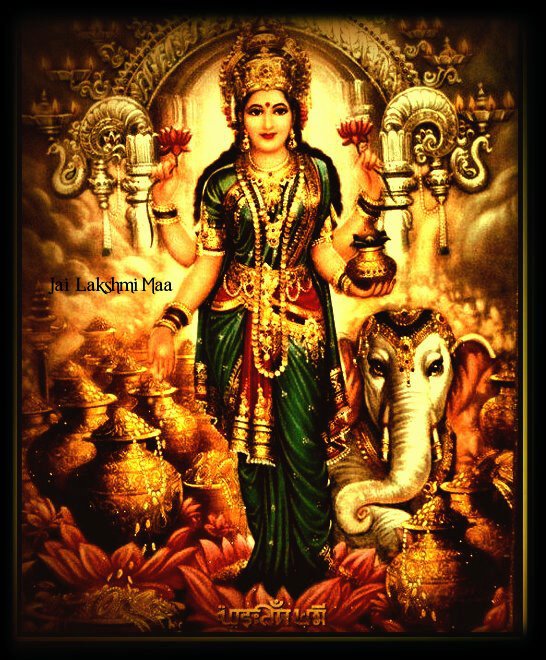

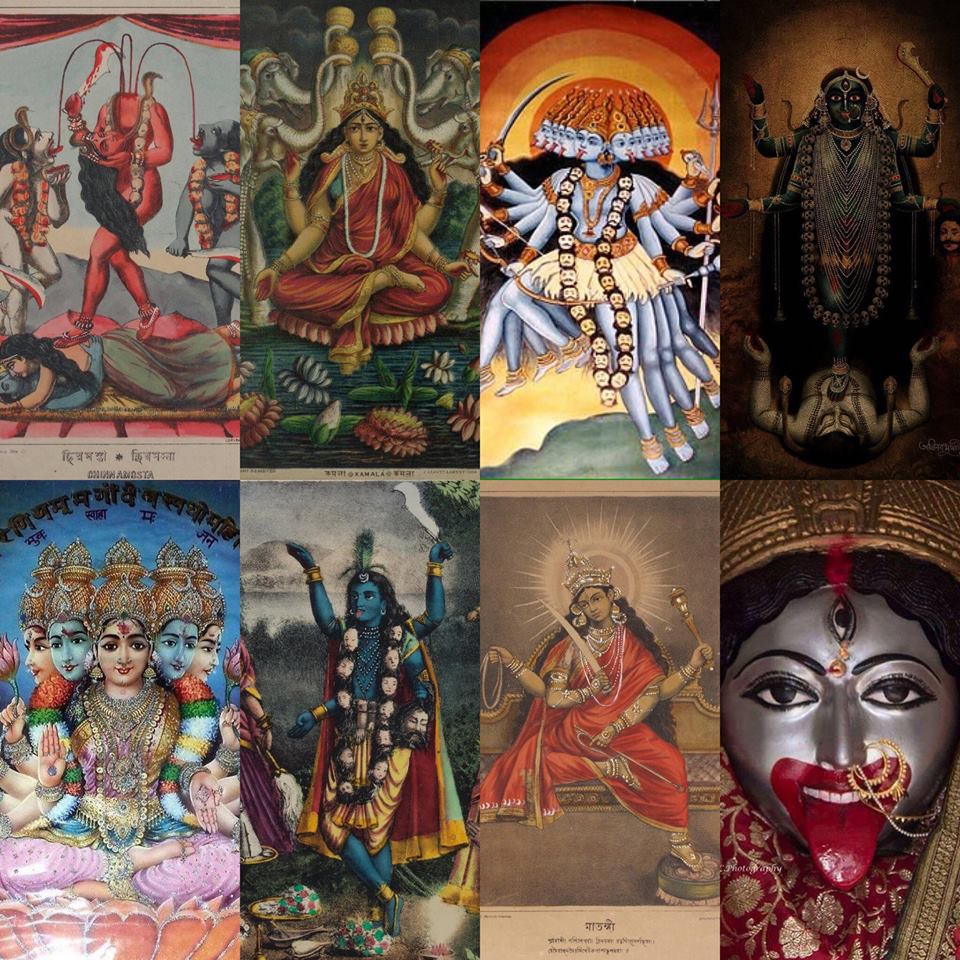
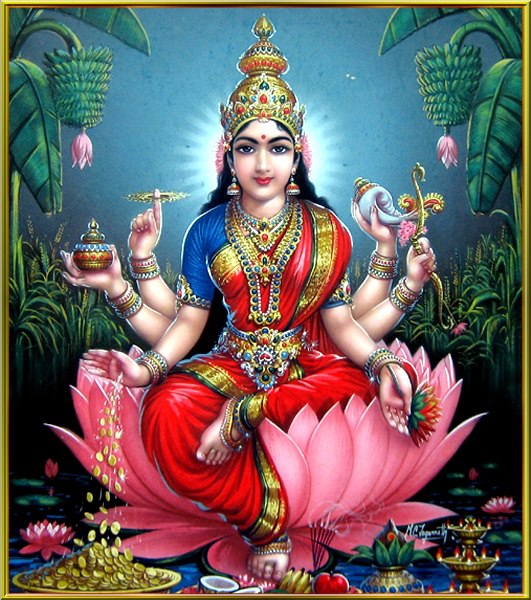



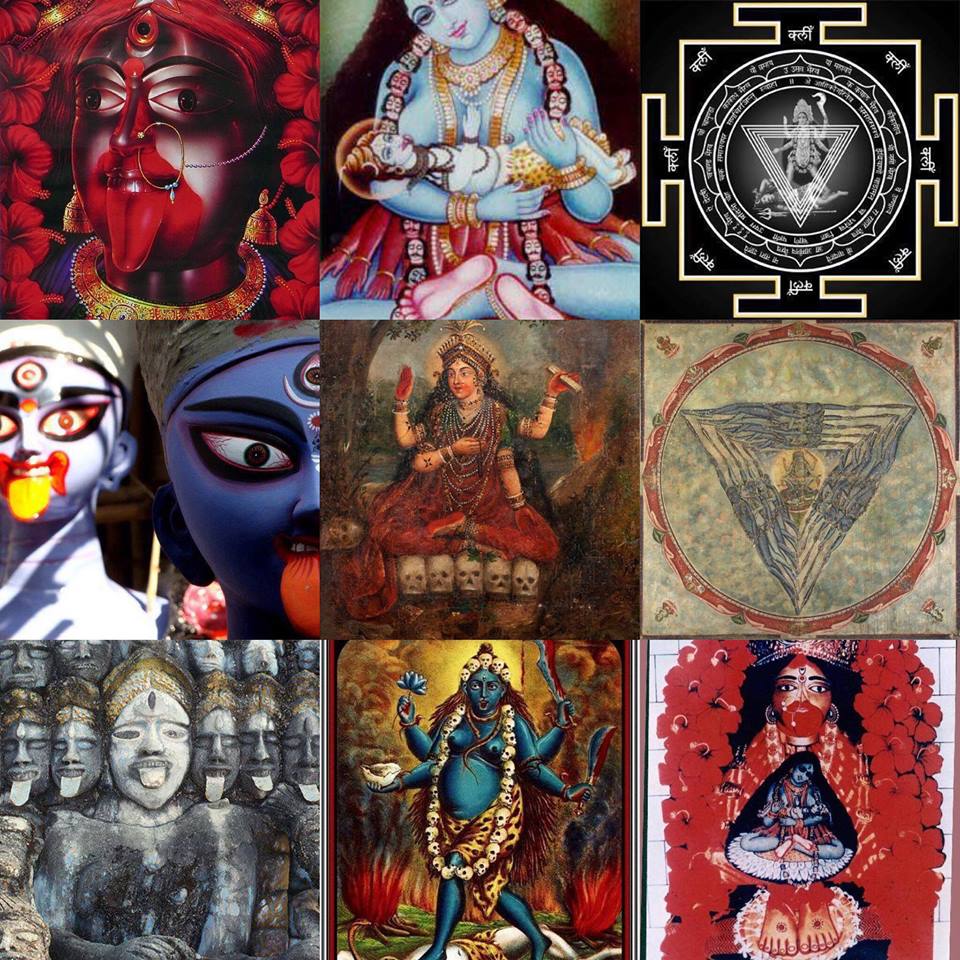


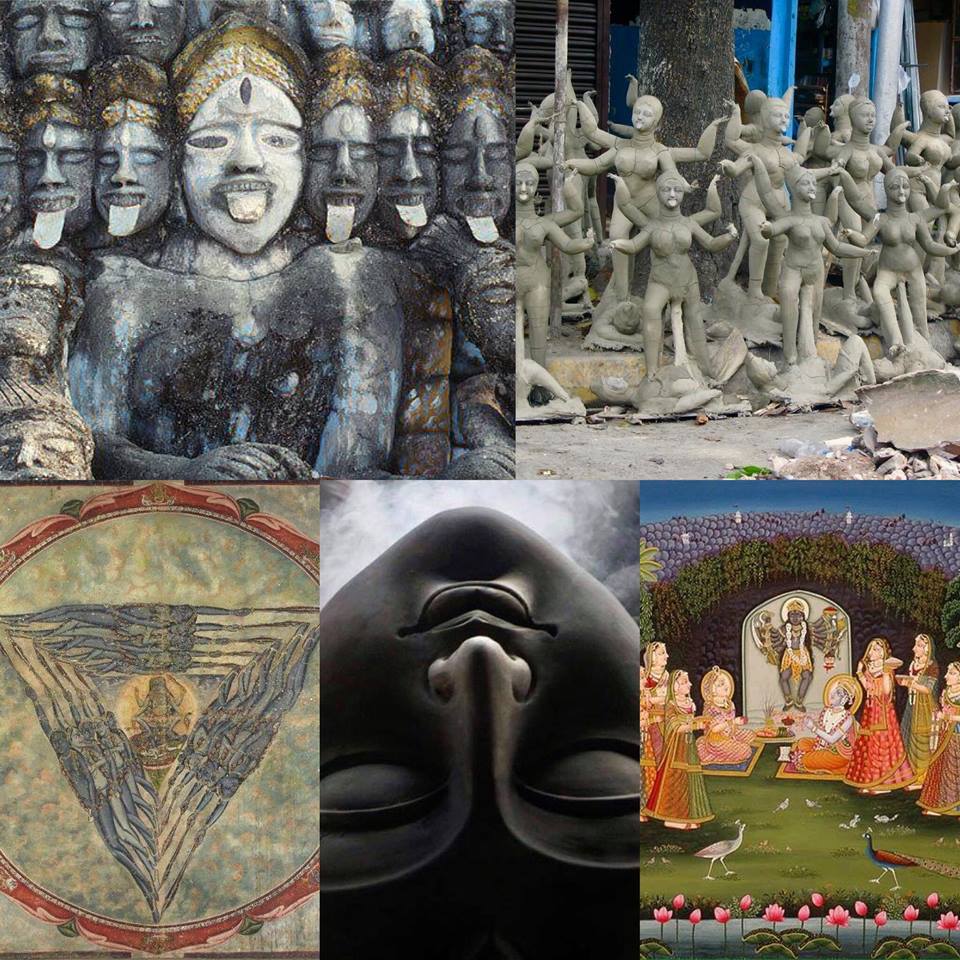







 RSS Feed
RSS Feed























